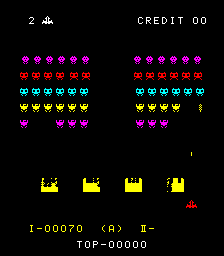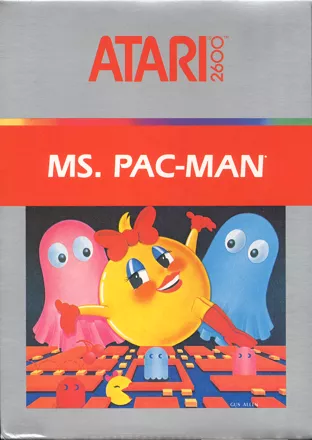
The practice of game cloning in arcades and consoles goes back to the industry’s origins – to take a quote from a 2001 issue of the Japanese CONTINUE magazine 1:
“the entire game industry itself began with copyright infringement, ever since Space Invaders..”
This timeline charts key instances of companies reverse-engineering or copying each other’s video games from the 1980s through the 2000s, focusing on arcade and home console titles. Each entry highlights notable clones, imitation games, and legal/technological battles that shaped industry norms.

Even Nintendo entered the fray, releasing Space Fever in 1979 – a clear Space Invaders clone – to capitalize on the alien-shooting craze 2.
Such copying was common in the young arcade industry, with many companies producing their own versions of successful games.

Pac-Man (Namco, 1980) becomes a global phenomenon, and an explosion of unauthorized clones follows.
Small manufacturers hacked or re-skinned Pac-Man into games like Mighty Mouth and Piranha, which were nearly identical in maze layout and character design. By 1981, dozens of Pac-Man knock-offs appeared across arcades and home systems.
This prompted Pac-Man’s U.S. distributor, Midway, and rights-holder Atari to aggressively defend the IP in court.
In one case, a judge described Mighty Mouth as “for all practical purposes, identical” to Pac-Man 3, leading Midway to win a 1983 summary judgment for copyright and trademark infringement.

K.C. Munchkin! for the Odyssey² console (Philips) became a landmark in clone litigation. The maze-chase game was so similar to Pac-Man that Atari (which had console rights to Pac-Man) sued.
In 1982, the U.S. Seventh Circuit court ruled that K.C. Munchkin! infringed Pac-Man’s copyrighted characters and maze design, ordering the clone off the market 4.
This case – Atari, Inc. v. Philips – was among the first to affirm that a video game’s audiovisual “look and feel” could be protected by copyright law.

One of the era’s most famous clones actually became an official sequel. Ms. Pac-Man began as an unauthorized enhancement kit called Crazy Otto, created by General Computer Corp. (GCC), a group of MIT dropouts who hacked existing arcade games 5.
Before Crazy Otto GCC had made a business of reverse engineering popular games and selling upgrade kits, they modded Atari’s Missile Command into Super Missile Attack and made $250k in profit!.
They used expensive hardware such as the GenRad 6502 microprocessor emulator from their dorm rooms in MIT and manually typed each screen of assembly that they got from the disassembler on to their TRS-80.
After a brief legal enounter with Atari over their Super Missile Attack upgrade kit, they agreed a settlement where Atari would pay GCC $50k per month over two years for them to make games for Atari. They agreed not to market arcade enhancement kits without the original manufacturer’s approval.
So next they started on the most popular game in arcades - Pac Man, which was based on a Z80 microprocessor so they bought a Tektronix 8550 as it has a Z80 emulator and a line printer to print the disassembled code 6.
After the previous legal pressure from Atari, GCC decided to pitch Crazy Otto to Midway (Namco’s American partner) instead of releasing it illicitly.
Midway enthusiastically bought the project as a way to quickly follow up Pac-Man’s success. Working with Namco, they reskinned the characters and released it as Ms. Pac-Man. The game – built on Pac-Man’s underlying code – became a smash hit!
Ms. Pac-Man’s unusual origin blurs the line between cloning and innovation: a bootleg mod was absorbed into official canon when the rights holders saw its value.